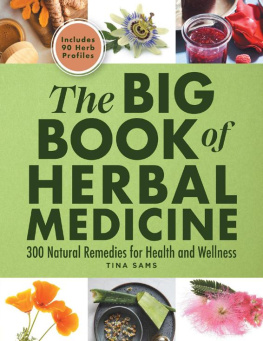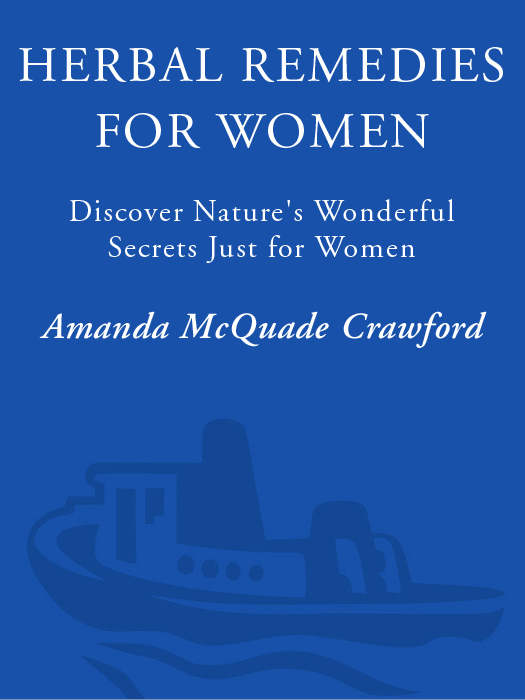Copyright 1997 by Amanda McQuade Crawford
All rights reserved.
Published in the United States by Three Rivers Press, an imprint of the Crown Publishing Group, a division of Random House, Inc., New York.
www.crownpublishing.com
THREE RIVERS PRESS and the Tugboat design are registered trademarks of Random House, Inc.
Originally published in the United Sates by Prima Publishing, an imprint of the Crown Publishing Group, a division of Random House, Inc., Roseville, California, in 1997.
Illustrations by Helene D. Stevens
Disclaimer
Random House, Inc., has designed this book to provide information in regard to the subject matter covered. It is sold with the understanding that the publisher and the author are not liable for the misconception or misuse of information provided. Every effort has been made to make this book as complete and as accurate as possible. The purpose of this book is to educate. The author and Random House, Inc., shall have neither liability nor responsibility to any person or entity with respect to any loss, damage, or injury caused or alleged to be caused directly or indirectly by the information contained in this book. The information presented herein is in no way intended as a substitute for medical counseling.
Library of Congress Cataloging-in-Publication Data
Crawford, Amanda McQuade.
Herbal remedies for women : discover natures wonderful secrets just for women / Amanda McQuade Crawford.
p. cm.
1. HerbsTherapeutic use. 2. WomenDiseasesAlternative treatment. I. Title. RM666.H33C73 1996
615.321082dc21
eISBN: 978-0-307-77866-6
v3.1
With thanks to my soul mate, Mark. Genius drummer, inspired writer, staunch Keeper of The Chicago Manual of Style when I would waver you understand the beauty of form and rhythm. From you I also learned that the greatest healer may be true love. May all my sisters know true love and make peace on earth.
Contents
Preface
M ANY WORDS HAVE been written about healing and nature over the last twenty yearsor even the last ten thousand years. All herbalists, from the Ph.D.s to the bumblebees, know which herbs do what, so why write these herbal and ecological truths again? First, because there are new findings to report. In addition, there have been mistakes made in the popular media that demand a balance of more accurate herbal information. Some of us who work with herbs need to be reminded of what we already know. And there are those to whom herbal therapy is a new field. Finally, I wrote this book because I believe that the worlds most helpful teachings are the same simple truths repeated in different forms, time and again, so that all may understand. It has certainly helped me to write eat whole foods a hundred times.
The herbal suggestions that I provide in this book are designed to require relatively few herbs. A woman who is new to herbs will get the best results with a manageably small list of herbs, used in several combinations for different effects. Though I will describe over two hundred herbs here, I dont expect you to buy, remember, understand, or need all of them.
The herb combinations that I recommend in this book can also be used by a willing practitioner or licensed caregiver who is learning about the use of botanical remedies with clients. These combinations are intended to be used by someone working on her own self-healing, with or without a physicians supervision, since I provide cautions where I feel they are appropriate.
In general, I prefer not to write down herbal formulas for treating particular symptoms or diseases since we treat individuals, not labels or diagnoses. I have overcome my bias to write this book, since it seems reasonable to give identifiable guidelines and clear suggestions. If you are an herbalist, I encourage you to substitute your favorite local materia medica for the herbs I recommend in a formula, as your rapport with your remedies according to your own system of practice will best serve a real-live person, no matter the pattern of disease.
In this book, I both question scientific studies and use them to back up claims for herbal or natural therapies. This is not merely a case of convenience. I love science when it increases our understanding of how things work, but the Western biomedical model is not the only way to understand disease and health. There are also abuses of so-called scientific information when experiments are undertaken to prove things that are favorable to the funding corporation.
At the end of the day, medicinal herbs cannot be judged by a Western medical rationale alone. The future of health care depends on our willingness to assess medical drugs and natural therapies according to the truth, not scientific or folkloric dogma. The truth is determined by testing whether drugs or natural therapies improve human health. When isolated compounds are tested on lab animals or in petri dishes, scientists may draw conclusions about safety that dont hold true when compounds are prescribed for people. How does testing herbs the same way drugs are tested provide dangerous misinformation? For example, beta-carotene is traditionally eaten in fruits and vegetables while the supplement has proved to be less effective. One knows the right dose for the right person by experience or following recommendations based on clinical experience. We are fortunate to be able to test herbs in their traditional context (right plant, right dose, right person). Superstition and arrogance exist on both sides of the fence separating science from traditional knowledge and use. It is time to re-fashion that fence into a bridge.
Womens health is not a separate issue from planetary health. Many conventional prescription drugs are made in factories that pour wastes into rivers and seas. Just as a cure requires paying attention to each individual woman, use of natural medicine means paying attention to each biological system, from the microcosm of the cell to the whole person to the global sphere. In a way, using herbs to treat common gynecological conditions heals a whole world.
This book is divided into several parts, covering menstruation and its common difficulties, abnormal cell growth, reproduction, infections, and menopause. Each chapter starts with a definition of the condition being discussed, a brief description of the issues surrounding this condition if cofactors such as stress and environment are known, cautions and conventional medical views, holistic herbal guidelines, nutrition, and additional suggestions.
I have included some overused and endangered plants when my experience indicates that they provide the most reliable treatment for a given health imbalance. However, I do point out whether a species is endangered, especially if the new consensus among herbalists is that less-endangered herbal substitutions may be appropriate.
The information found in this book reflects my truth, my training, and my experience. It is offered as a stepping stone to each who would find her own truth. May our earth be well.
Amanda McQuade Crawford
Ojai, California
Acknowledgments
T HIS WORK WAS originally commissioned by Commonwomans Health Project, a cooperative womens clinic in Santa Rosa, California. These herbal protocols were intended to be used by trained medical personnel in various womens clinics around the United States and other countries. A genuine zeal on the part of clinicians looking for safe and effective herbal therapy resulted in the forty-page manual,












